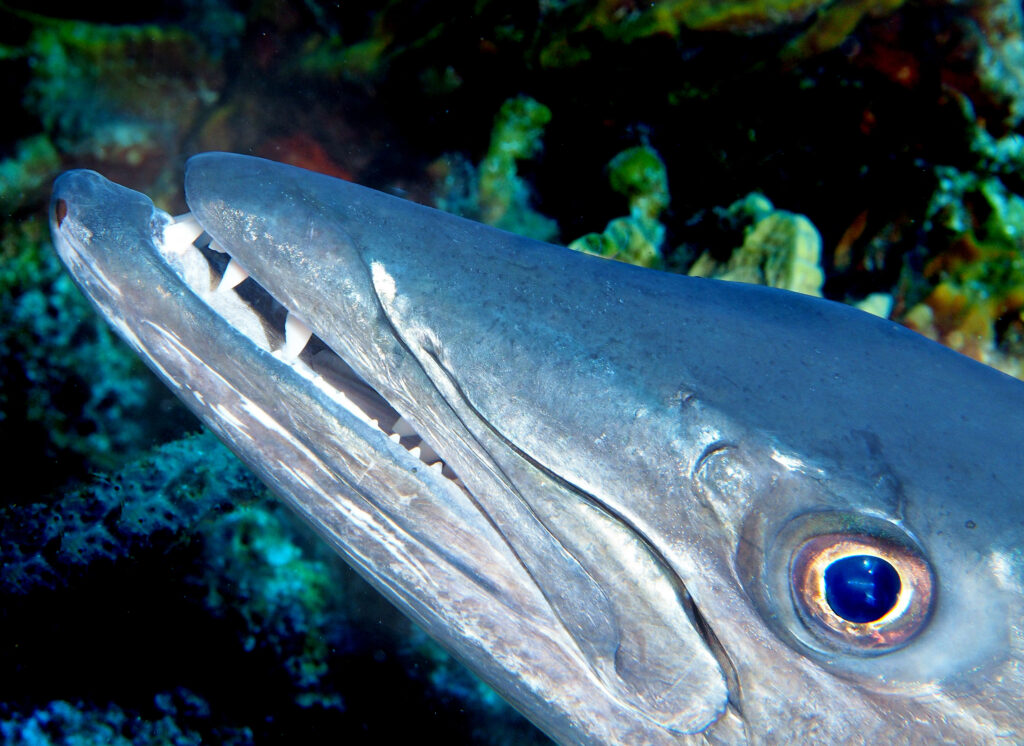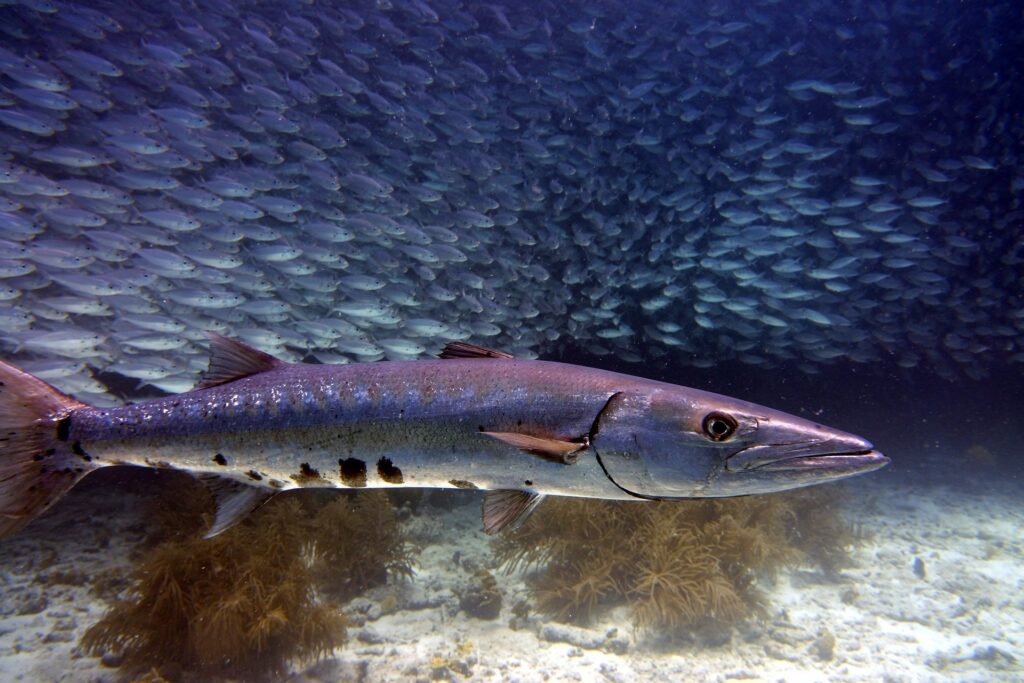Oooh, Barracuda
This blog is best read with musical accompaniment. May we suggest, Barracuda by Heart? You’ll be glad you listened while you read.
The great barracuda, Sphyraena barracuda, has a reputation for being fast, aggressive and a fish you should avoid. Their sharp teeth and speed make them especially good predators. Let’s dive in and learn more about the great barracuda.
Never miss an update
Enter your email and never miss an update
Appearance and Diet
The great barracuda is a well-known fish that is easily recognizable. The physical appearance of the barracuda is long and slender with a streamlined body. Their color is blueish gray on the top and greenish-white on the bottom. The lower jaw of their mouth extends out further than their top jaw which is lined with razor-sharp teeth. Great barracuda can weigh up to 106 pounds and grow to a length of more than five feet!
It isn’t a great idea to consume great barracudas. It’s been documented that eating great barracudas may cause ciguatera poisoning—a foodborne illness caused by the build up of a specific toxin in certain tropical marine fish.
The diet of the great barracuda is vast—they eat a wide variety of ocean critters, including fishes, cephalopods and sometimes shrimp. Their hunting style is to attack with one fast and ferocious strike. They can swim up to 35 mph. They’ve been known to swim with their mouths open, speeding through the water towards their prey—and then attack by slicing their meal clean in half with this one strike.
The great barracuda is a daytime hunter and an opportunistic predator, finding food throughout the water column. Great barracudas are not commercially fished but they are a favorite of recreational fishermen since they are known to put up a good fight. They rarely attack humans, but they have accidentally attacked shiny objects or fish caught on spears.
Reproduction
Reproduction of the great barracuda is not well documented. Scientists believe that spawning takes place in deeper, offshore waters. During spawning events, eggs are released and fertilized in open waters and travel through the ocean by the currents. Newly hatched larvae find refuge in shallow estuaries among the vegetation as a way to stay safe from hungry predators.

Habitat and Range
The great barracuda’s habitat is typically at or near the surface of the ocean. However, young fish live among mangroves, estuaries and shallow reefs. The great barracuda is a solitary fish, preferring its own company most of the time, but they can sometimes be found in small groups.
The range of the great barracuda is worldwide in tropical and subtropical seas. They are common in the western Atlantic Ocean from Massachusetts to Brazil. They are also found in the Gulf of Mexico and the Caribbean Sea as well as the eastern Atlantic Ocean, Indo-Pacific and the Red Sea.
Population Status
The great barracuda can live up to 18 years. The population status of the great barracuda is stable. The barracuda is not listed as endangered or vulnerable with the World Conservation Union (IUCN). The IUCN is a global union of states, governmental agencies and non-governmental organizations that assesses the conservation status of species.
The great barracuda is part of the ocean ecosystem and integral to a healthy food chain. It’s up to all of us to help protect the great barracuda and all the animals living in the sea. Ocean Conservancy is working with you to protect the ocean from today’s greatest global challenges. Together, we create evidence-based solutions for a healthy ocean and the wildlife and communities that depend on it.
Please make a donation to Ocean Conservancy—give today and make a difference for the future of our ocean!

